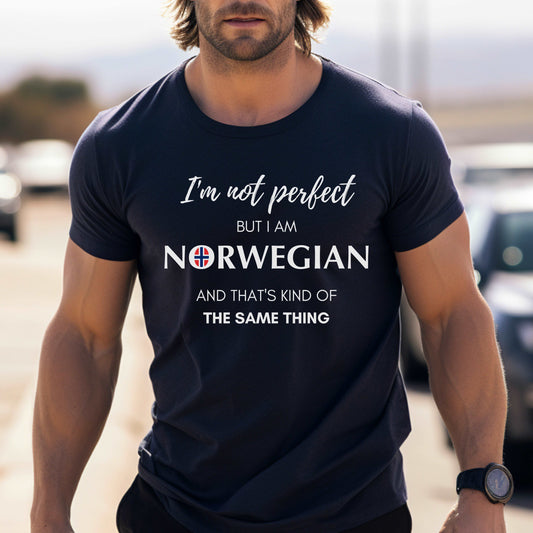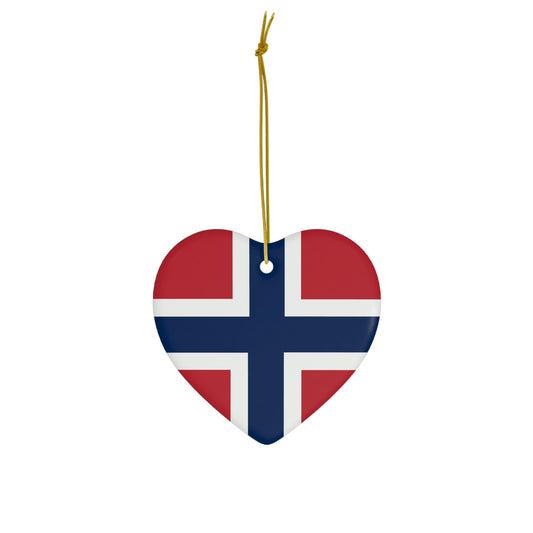
The flag of Norway stands as a vivid symbol of the nation's rich history, cultural heritage, and the enduring spirit of its people. With its striking design and bold colors, the Norwegian flag is not just a national emblem but a source of deep pride for Norwegians both at home and abroad. This article delves into the history, symbolism, and significance of the Norway flag, exploring how it reflects the country's identity and values.
The Norway flag, with its distinct red, white, and blue design, is more than just a piece of fabric. It represents centuries of history, unity, and independence. The flag's design dates back to the 19th century and is deeply rooted in Norway's cultural heritage. The Norwegian flag is a symbol of unity, representing a country that has overcome challenges and forged a strong national identity. The vibrant red color stands for bravery, while the royal blue represents loyalty and truth. The white Nordic cross is a reminder of Norway's Christian heritage and signifies peace and purity. Norway's flag holds great significance to its people and its rich cultural history. It is a proud emblem that showcases the nation's achievements and reflects its values of freedom, equality, and inclusivity. Whether displayed proudly on National Day or waving in the wind at international events, the Norway flag is a powerful symbol that unites Norwegians around the world. It serves as a reminder of their heritage and a beacon of pride.
History and design of the Norway flag

The Norway flag, also known as the "Nordic cross flag," has a rich history that dates back to the early 19th century. Prior to the adoption of the current flag, Norway had been under the rule of Denmark and later Sweden. However, the desire for independence and a unique national identity led to the creation of a flag that would symbolize the nation's aspirations.
The current design of the Norway flag was adopted on July 17, 1821, making it one of the world's older national flags. Its design features a red field with a blue cross outlined in white that extends to the edges of the flag. The cross follows the Scandinavian tradition, symbolizing Norway's historical and cultural connections to other Nordic countries such as Denmark and Sweden.
The flag's creator, Fredrik Meltzer, a member of the Norwegian parliament, drew inspiration from the French Tricolore, the American flag, and the flags of other Scandinavian countries. The choice of colors—red, white, and blue—reflects the principles of liberty, equality, and fraternity, which were fundamental ideals of the period following the French Revolution and the American War of Independence.
This simple yet powerful design was chosen to represent Norway's close ties with its Nordic neighbors, as well as the country's Christian heritage. The flag's proportions are specified by law, ensuring that its design remains consistent and recognizable.
The Norway flag holds great significance to the Norwegian people, representing their struggle for independence and their determination to establish a distinct national identity. It is a symbol that unites Norwegians around the world and serves as a reminder of their rich cultural heritage.

Symbolism and meaning behind the Norway flag

The Norway flag is rich in symbolism and carries deep meaning for the Norwegian people. The vibrant red color represents bravery, strength, and the blood of those who fought for Norway's independence. It serves as a powerful reminder of the courage and resilience of the Norwegian people throughout history.
The white Scandinavian cross on the Norway flag represents Norway's Christian heritage and symbolizes peace and purity. It is a reminder of the values and principles that have shaped the nation's history. The blue color, with its white border, represents loyalty, truth, and justice. Together, these colors encapsulate the values that underpin Norwegian society.
The cross design, common among Nordic countries, has a historical and cultural significance. It is an emblem of Christianity, reflecting Norway's Christian heritage, and also symbolizes the cross on which Saint Olav, the patron saint of Norway, was martyred. The off-center alignment of the cross is known as a Nordic or Scandinavian cross, which creates a dynamic sense of movement and balance.
The Norway flag is a symbol of unity, bringing together people from different backgrounds and regions under a common banner. It represents the shared values and aspirations of the Norwegian people, fostering a sense of national identity and pride.
The significance of the colors in the Norway flag

Each color in the Norway flag holds a special significance and reflects the values and history of the Norwegian people. The vibrant red color represents bravery and strength. It symbolizes the blood that has been shed by Norwegians in the pursuit of freedom and independence.
The white color on the Norway flag represents peace and purity. It is a reminder of Norway's Christian heritage and the importance of maintaining peaceful relations both domestically and internationally. The white border around the blue Scandinavian cross further emphasizes the country's commitment to truth and justice.
The blue color on the Norway flag represents loyalty and truth. It signifies the Norwegian people's unwavering commitment to their values and principles. It serves as a reminder of the importance of honesty, integrity, and loyalty in all aspects of life.
Together, these colors create a powerful symbol that embodies the spirit and character of the Norwegian people. The Norway flag serves as a constant reminder of the values and principles that have shaped the nation and continue to guide its progress.
The Norway flag color codes

The Norwegian flag features a simple yet striking design with three colors: red, blue, and white. The specific color codes for the Norwegian flag, suitable for various applications such as digital design and printing, are as follows:
Red : The red color is vibrant and serves as the background of the flag. For digital use, a common RGB (Red, Green, Blue) code for the red is (186, 12, 47). In hexadecimal color code, it is #BA0C2F. For printing or paint purposes, the Pantone color might be used, which is approximately Pantone 186 C.
Blue : The blue color is used for the cross outline and is a dark shade. The RGB code for the blue is (0, 32, 91), and the hexadecimal code is #00205B. The Pantone color for the blue is approximately Pantone 281 C.
White : The white color outlines the blue cross and separates it from the red background. White in digital formats is represented by the RGB code (255, 255, 255) and the hexadecimal code #FFFFFF. In physical formats, white is usually the absence of color or the natural color of the material.
Evolution of the Norway flag over time

The design of the Norway flag has evolved over time, reflecting the country's changing political landscape and cultural identity. In the early 19th century, Norway sought to establish its independence from Denmark and adopted a flag that featured a white Scandinavian cross on a red field.
However, when Norway entered into a union with Sweden in 1814, the flag was modified to include the Swedish colors. This union, which lasted until 1905, led to the addition of a blue Scandinavian cross on a white field to the Norway flag. This design symbolized the close ties between Norway and Sweden during this period.
After Norway gained independence from Sweden in 1905, the flag was once again modified to its current design. The red field with a white-bordered blue Scandinavian cross was adopted as the official flag of Norway. This design has remained unchanged since then, serving as a powerful symbol of Norway's independence and cultural heritage.
The evolution of the Norway flag reflects the country's journey towards independence and the establishment of a unique national identity. It serves as a reminder of the challenges overcome and the progress made by the Norwegian people.
National celebrations and events involving the Norway flag

In Norway, the flag is flown widely on public buildings, private homes, and during national celebrations. Norwegian Flag Day, observed on May 17th, coincides with Constitution Day, Norway's national day. On this day, the flag is displayed prominently across the country as Norwegians celebrate their independence and cultural heritage.
On May 17th, Norwegians across the country come together to celebrate their heritage and express their patriotism. The streets are filled with parades, music, traditional costumes, and, of course, the waving red, white, and blue flags. The Norway flag is proudly displayed on buildings, homes, and even worn as badges or pins.
There are specific rules and customs regarding the display and use of the Norwegian flag. It is generally raised at sunrise and lowered at sunset, and it must always be treated with respect and dignity. The flag is also used in various forms in military and civil insignia, showcasing its importance as a national symbol.
In addition to National Day, the Norway flag is also raised on other significant occasions such as state visits, royal weddings, and official ceremonies. It is a symbol that unites Norwegians and represents their shared values, aspirations, and achievements.

Cultural significance of the Norway flag

The flag of Norway is more than just a national emblem; it is deeply ingrained in the country's culture and identity. It represents the love of the homeland, the beauty of the Norwegian landscape, and the pride of its people in their history and achievements. During significant sporting events, particularly winter sports in which Norway excels, the flag is often seen waved by fans, symbolizing national unity and support for their athletes.
The flag is often used to represent Norwegian culture at international events, such as the Olympic Games, where it is proudly displayed by Norwegian athletes. It serves as a reminder of Norway's contributions to the arts, literature, music, and sports.
Furthermore, the Norway flag is closely associated with the country's stunning natural landscapes, such as its majestic fjords, mountains, and the Northern Lights. It has become a symbol that represents Norway's unique natural beauty and the deep connection the Norwegian people have with their environment.
The Norway flag is also an important part of Norwegian folklore and is often featured in traditional celebrations and festivals. It is a symbol that brings people together, fostering a sense of community and belonging.
The Norway flag in international relations and diplomacy

The Norway flag plays a significant role in international relations and diplomacy, representing Norway's sovereignty and its commitment to peace, cooperation, and human rights. It is displayed proudly at embassies, consulates, and international organizations around the world.
Norwegian diplomats and ambassadors often wear flag pins or badges to signify their nationality and to represent Norway in official settings. The flag is a powerful symbol that helps to establish a positive image of Norway and its people.
The Norway flag is also used to mark Norwegian territories abroad, such as the Svalbard archipelago and the Antarctic territories. It serves as a reminder of Norway's presence and influence in these regions.
Furthermore, the flag is often raised during official visits by foreign dignitaries or during state visits to Norway. It is a symbol of respect and hospitality, welcoming guests to the country and representing the values and principles that Norway holds dear.
Common misconceptions about the Norway flag

Despite its rich history and symbolism, there are some common misconceptions about the Norway flag. One of the most prevalent misconceptions is that the flag is a copy of the Danish flag, as both feature a white Scandinavian cross on a red field. However, the Norway flag has a blue border around the cross, distinguishing it from the Danish flag.
Another misconception is that the colors of the Norway flag were chosen to represent the country's natural beauty, such as the red for the mountains, the blue for the fjords, and the white for the snow. While this interpretation is poetic, it is not historically accurate. The colors of the Norway flag were chosen for their symbolism and historical significance, rather than their representation of the natural landscape.
It is important to recognize and understand the true history and symbolism behind the Norway flag to fully appreciate its significance and meaning to the Norwegian people.
Conclusion: The enduring legacy of the Norway flag
The flag of Norway is a powerful symbol of the nation's past, present, and future. Its design and colors reflect the values and aspirations of the Norwegian people, while its history tells the story of a nation's journey towards sovereignty and self-determination. As a symbol of pride and heritage, the Norwegian flag continues to inspire and unite Norwegians around the world, serving as a reminder of their shared identity and enduring spirit.
Throughout history, the Norway flag has served as a powerful symbol of Norway's struggle for independence and the establishment of a unique national identity. It has evolved over time, reflecting the changing political landscape and cultural identity of the country.
Whether proudly displayed on National Day or waving in the wind at international events, the Norway flag serves as a reminder of the achievements of the Norwegian people and their commitment to freedom, equality, and inclusivity. It is a symbol that unites Norwegians around the world and fosters a sense of national pride and identity.
The enduring legacy of the Norway flag is a testament to the resilience and determination of the Norwegian people. It is a symbol that will continue to inspire and unite future generations, reminding them of their rich cultural heritage and the values that define their nation.












